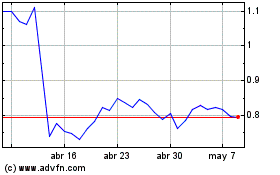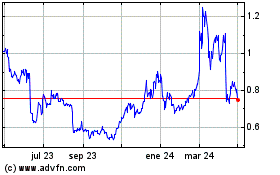Over the past two years, NFTs, or non-fungible tokens, have taken
over the conversations in the crypto market. These digital assets
are welcoming the general population into the crypto space, with
celebrities, athletes, and billionaires getting an opportunity to
connect with their fans. While the “NFT” buzzword has been overused
across mainstream media and social media platforms, many investors
and holders of NFTs do not understand what NFTs are and why they
were created. I could go as far as assuming that even the experts
in the crypto space today don’t necessarily fully understand what
NFTs are used for (minus digital art and collectible items) and
what the future holds for this budding industry. In this article,
we remove any fog surrounding the space and explain the widespread
use cases for NFTs, the projects working in the NFT space and what
the future holds for the space. Understanding Non-fungible Tokens
(NFTS) Non-fungible tokens, or NFTs, are digital tokens that are
built on the blockchain and used to represent ownership of unique
assets. Via NFTs users can show immutable ownership of assets such
as art, music, videos, collectibles, and even title deeds. The
differentiating factor between NFTs and traditional data records is
that NFTs can only have one owner at a time, secured by the
blockchain, meaning no one can modify the record of ownership, or
create a copy of the NFT. As the name suggests, NFTs are
non-fungible, an economic term that describes uniqueness.
Generally, NFTs are built using the same technology as
cryptocurrencies and are based on the blockchain, but that’s where
the similarities end. Fiat currencies and cryptocurrencies are
“fungible” meaning they can be traded for one another without any
implications. Simply, you trade one US dollar for another US
dollar, or one Bitcoin for another Bitcoin, given they are always
equal. However, NFTs are drastically different from
cryptocurrencies due to their non-fungible properties. Each NFT
includes a unique digital signature that differentiates one NFT
from another. As such, one Bored Ape Yacht Club (BAYC) NFT is not
equal to a CryptoPunk or Azuki NFT, actually, no two BATC NFTs are
the same too. These properties have seen the value for NFTs sore
since coming to light in 2014 as the industry becomes an
increasingly popular avenue for artists to sell and collectors to
buy the artwork. One of the most popular NFT artworks, Everyday’s:
The First 5000 Days by Beeple, sold for a record $69 million at
Christie’s, the 255-year old auction house, last year in
March. Until October, the most Mike Winkelmann — the digital
artist known as Beeple — had ever sold a print for was $100.
Beeple’s $69 million NFT: Everyday’s: The First 5,000 Days by
Beeple (Image: Beeple) Since then, hundreds of NFT pieces
have sold for millions, opening up the market for these digital
artworks. Snoop Dogg, Steph Curry, Lil Wayne, Lionel Messi, Neymar
Jr, Justin Bieber, Paris Hilton, and several other celebrities have
all bought into the NFT space, owning at least one NFT. As such,
the NFT market value has exponentially grown into a $50 billion
market, according to DappRadar, showing potential for future growth
as even more investors buy these digital assets. Despite digital
art and files dominating the NFT space, it only represents only one
way to use these digital assets. NFTs, as explained above, can be
used to represent unique ownership of any asset and file, from land
title deeds, academic certificates, or any item in the digital and
physical realm. Below we look at some of the forgotten use cases of
NFTs that could open up the world to a new digital revolution. The
Wider Use Cases for NFTs It is hard to imagine NFTs as anything
else rather than the wonderful digital pieces of art displayed
across OpenSea and Looksrare marketplaces. Far from it, NFTs have
widespread use cases that can be used to represent any kind of
asset whether it’s your table, title deed, or even intangible
assets such as royalties and intellectual property rights. Apart
from the wide use of NFTs in the gaming world, these digital assets
have more to offer the global financial and economic ecosystems.
Here, we discuss some of the ways that NFTs can be used and the
benefits they offer to the global economic systems.
1. Intellectual Property and Royalties One of the
major reasons Bitcoin (and with respect to the crypto and
blockchain industries) have been so successful till now is to give
users autonomy and control over their own data and creations. NFTs
have more potential in this role, especially for artists,
musicians, and digital creators. NFTs give creators control over
their creations and build a platform to better track music
royalties and intellectual property (IP). Some of the platforms
dealing with music-NFTs include Catalog, the primary marketplace
for single-edition music NFTs; Sound.xyz, which runs almost
daily drops where collectors or traders can mint editions of music
NFTs; and Beats Foundry. NFTs can provide information on ownership
of an IP, especially with blockchain timestamps, and the entire
history of the IP. Simply, the artist mints the IP as an NFT, and
with the information recorded on an immutable network, the NFT
owner could prove they were the original creator of a piece of work
at any point in time. Additionally, NFTs can also be used to track
royalties paid to the creators. For instance, every NFT sold on
Opensea, an NFT marketplace, remits around 2% of the sale (and
every resale) of the NFT to the original creator. Several artists
and musicians have taken the NFT route to monetize their craft.
Kings of Leon, last year March, became the first band to release
their album titled When You See Yourself, as NFT and raised $2
million in the process. Other popular artists that have also
released NFT projects include Grimes, DJ 3LAU, Steve Aoki, and
Bajan rapper Haleek Maul. 2. Identity
Verification As the world becomes more digital and connected, there
is a growing need for trustless digital ownership, and NFTs (given
their unique features) provide the perfect solution for this
problem. A stable and secure digital identity across the real
world, virtual worlds and the metaverse offers massive advantages
to the digital future. It promises to give people the freedom to
build genuine societies in the metaverse – with social, economic,
even political interaction. The value of NFTs resides in the
ability to capture human’s uniqueness, in a similar way that each
human is unique. This could be beneficial for governments as
individuals’ data (such as the driving license, passport and ID
numbers) can simply be coded into an NFT and this NFT can then be
used to verify the individual’s information digitally. One such
project is Photochromic, which enables people to securely own and
verify their identity and personal information through an NFT.
PhotoChromic aggregates biometric proof of life, with
government-backed identity verification and unique personal
attributes, into an on-chain asset that is utilised for blockchain
based identity verification and Web3 applications.
3. Academic Credentials NFTs are moving from the
art world into academia and theoretically into every other industry
as seen in the examples above. However, none of the industries have
quite embraced NFTs (except entertainment and art) than the
academic world. NFTs are a good way to represent academic
credentials. As units of data are saved onto a blockchain, the
provenance of every NFT is trackable, substantiating ownership and
authenticity, which could translate to tracking academic
credentials. The world of academia is already welcoming blockchain
in the space and NFTs could further impact the record-keeping at
schools, universities and other learning institutions. For
instance, Blockademia, a Cardano-based DApp, is at the forefront of
minimizing document and identity fraud, especially government
documents, education certificates and IDs. Simply, Blockademia is a
decentralized information system that checks the authenticity of
certificates and government documents ensuring they are legal,
legitimate, and authorized by the relevant authorities. By
integrating NFTs, verifying academic credentials will be far much
easier. Today, these credentials are issued manually and often on
physical paper, which makes them easy to fake. Academic
institutions should integrate solutions such as Blockademia,
creating NFTs linked to diplomas or certificates, which are
immutable. NFTs also reduce the cumbersome process of graduates
sending physical (or digital) certificates to employers.
4. Asset Protection/ Crypto Inheritance
Over the past decade or so, digital assets have slowly crept into
investors’ portfolios affording them immense opportunities.
Nonetheless, the complexity of these assets poses risks for most
investors as management and storage of crypto remains a key issue
for investors, especially the newcomers. To ensure total security
of assets, self-custody wallets are preferred to having a third
party holding the assets. Additionally, crypto-asset inheritance
has always presented a pain point for self-custody, as
security-minded users often fail to make provisions in the event of
sudden death. The grieving family members often have no way to
access their relative’s inheritance, permanently locking the assets
away. The consequence of not resolving this issue could leave
billions of dollars worth of crypto locked in cold wallet storage,
removing them permanently from circulation. Serenity Shield, a
crypto inheritance firm, is preparing its users for such an event
by preserving access to the tokens in case the owner passes away.
The company incorporates NFTs allowing the end user to set, store,
and save their unique credentials to the Serenity Shield
application. The system divides a user’s wallet, called the
StrongBox, into three non-transferable NFTs. The NFTs each contain
a third of a secret (based on Shamir’s Secret Sharing) needed to
access the wallet. One NFT is held by the user, another is held by
the nominated heir, and the third is held by Serenity Wallet, a
smart contract that delivers its key to either the heir or the
original user depending on specific Activation Conditions defined
when setting up the StrongBox. The conditions can be based on lack
of activity, or active “pings” requiring action to ensure the
original user still has access to the wallet. 5.
Ticketing for Events Finally, NFTs are also taking over the
ticketing system for events. The current ticketing systems have
shown loopholes such as counterfeiting, faking, and slow entry into
events. The introduction of NFTs enhances the functionalities,
speed, and cost of the ticketing system. Paper tickets present
difficulties in that they may be misplaced, become damp or even
damaged. To this end, most event organizers have turned to the QR
codes, which also presents its challenge such as failure of systems
at the entry of the event, leading to slow verification of the
tickets. Additionally, QR codes are ineffective in terms of
attendees purchasing them. Event organizers can turn to NFTs to
minimize the cases of forging and faking tickets given the
immutability properties that they hold. Simply, organizers can mint
the appropriate amount of NFT tickets using their preferred
blockchain platform. They can customize the NFTs to establish the
sale price, or alternatively conduct the sale as an auction.
Customers can then purchase these tickets and save them on their
blockchain wallets, which will then be scanned and verified upon
their arrival at the event. Apart from verifying the authenticity
of the tickets, NFTs also allow primary buyers to sell/transfer
their tickets to secondary buyers, who can verify that they are
purchasing a genuine ticket to an event. Conclusion The rise of
NFTs in the past half-decade opens up the world to representing any
unique asset on the blockchain. While the industry has flourished
in the art and entertainment sector, there’s still so much
potential that NFT users can tap into to enhance systems across the
global economy. The use cases mentioned above are only the tip of
the iceberg for this massively growing industry!
EOS (COIN:EOSUSD)
Gráfica de Acción Histórica
De Mar 2024 a Abr 2024

EOS (COIN:EOSUSD)
Gráfica de Acción Histórica
De Abr 2023 a Abr 2024
